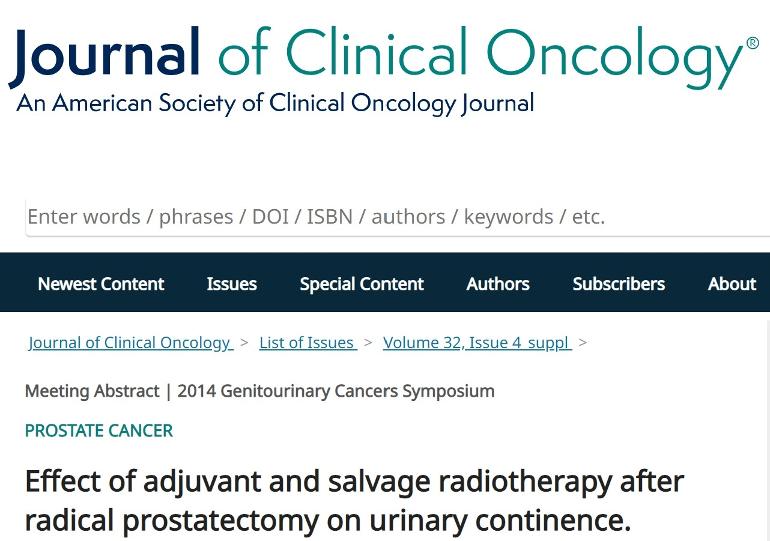Well, I am 'continent' according to the criteria in this study (a bit old, but not ancient)...of course continence here is defined as "no pads or one safety pad." OK. Now, I went into sRT with a safety pad and was warned by my RO that this had a chance of being 'locked in.' I proceeded anyway and 2 years post-sRT am unchanged; most days no pads/ outdoor work safety pad needed...in our early stages of fighting this disease we are strictly focused on treatment, side effect be damned...then time passes as we realize, 'Hey! There may be a chance that I can survive this thing!' Its then that the consequences of early decisions and aggressive treatment come into focus.
Goldilocks never had to worry about PCa, so in her world getting things 'just right' was an option...not with PCa. If you go easy up front and things go south, you ponder if you were not tough enough...if your aggressive up front and things go favorably you beat yourself up having gone 'all in' while suffering side effects. So in the end you never know what the cost of doing less would have been, only what the effects are of treating PCa early and hitting it hard.
I offer this study if this helps others make a decision. If I could go back I would have stayed on ADT for longer than 6 months to see if I could get dry, then have sRT. Rick
© 2014 by American Society of Clinical Oncology
Background: The clinical value of adjuvant (aRT) or salvage radiation (sRT) for patient treated with radical prostatectomy (RP) is currently controversially debated. In this study, we assessed the impact of aRT and sRT on long-term urinary continence.
Methods: Overall, 15,901 patients who underwent RP in our center between 1992 and 2012 were analyzed.
• aRT within the first 6 months was performed in 734 (2.9%) patients, and
• sRT after 6 months in 1405 (8.8%) patients (median time 21.6 months), respectively.
• Continence rates were assessed annually after RP using a self-administrated questionnaire.
• Median follow-up was 48.4 months.
• Continence was defined as the use of no pads or one safety pad.
• Incontinence was categorized by the number of used pads.
Results: In multivariate logistic regression analysis, adjusted for age, prostate volume, extend of nerve-sparing, year of surgery, the event of additive RT (HR=1.2, p=0.17) was not statistically relevant correlated with the long-term continence status whereas all other variables significantly correlated with urinary incontinence (p<0.01, each).
• The lacking correlation of RT and continence remained in a second logistic regression model, adjusted for tumor features (pT, pN, Gleason, PSA, margin-status).
• The timing of RT (aRT vs. sRT) was not statistically relevant correlated with the long-term continence status (aRT HR=1.7, p=0.09; sRT HR=1.2, p=0.5)
• In addition, a comparison of all patients received aRT with a propensity score based matched cohort of RP only patients (corrected for age, prostate volume, extend of nerve-sparing and year of surgery) revealed no statistical significant impact of RT on continence (p>0.05).
• In 248 patients, the continence status was available pre and post RT, again not showing a negative impact of RT (p>0.05).
Conclusions: Additive radiation therapy after radical prostatectomy does not negatively affect urinary continence.
